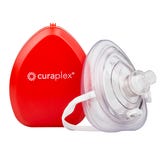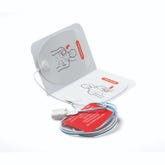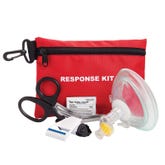A Step-by-Step Guide to Performing CPR on Your Pet
- Apr 16, 2018

Did you know that a whopping 84.6 million families own a pet (American Pet Products Association)? That’s 68% of all American households! For animal lovers, our pets are part of the family. We love them, we cherish them, and we turn to them for comfort. They bring us joy and they make us laugh.
Although our animals are beloved members of the family, how many of us are prepared to perform life-saving cardiopulmonary resuscitation (CPR) in the event our furry friend’s heart stops beating?
Recommendations for CPR in Dogs and Cats
CPR is a combination of chest compression and artificial respiration. It is typically performed when you cannot feel or hear your pet’s heartbeat. Once the animal stops breathing, the heart will go into cardiac arrest and stop beating.
According to American Veterinary Medical Foundation, in 2012, more than 100 veterinary specialists from around the world reviewed scientific papers related to CPR in animals to put together comprehensive guidelines for veterinarians and pet owners. General recommendations include:
- Perform 100 to 120 chest compressions per minute.
- Compressions should be performed with the animal lying on its side and should be as deep as one-third to one-half of the chest width.
- Ventilate intubated dogs and cats at a rate of 10 breaths per minute. For mouth-to-snout ventilation, maintain a compression-to-artificial respiration ratio of 30-2.
- Perform CPR in 2-minute cycles. If possible, switch the person performing the compressions with each cycle.
- In a medical setting, administer vasopressors every 3 to 5 minutes during CPR.
A free special issue of the Journal of Veterinary Emergency and Critical Care covers the development of the guidelines as well a detailed evidence analysis.
How to Perform Artificial Respiration and CPR on Your Pet
First, check for a heartbeat by watching for the rise or fall of the chest, feel for breath using your hand, or check the gums — they will turn blue from lack of oxygen. Make sure the animal’s airway is clear and free from obstructions.
At this point, it’s important to note that performing CPR on an animal that is healthy and has a heartbeat can cause physical complications and may even be fatal. If your pet’s chest is not moving and you cannot detect a heartbeat, begin CPR with chest compressions immediately.
Next, prepare to begin chest compressions. The American Red Cross recommends placing your hands on your pet as follows:
-
- For cats, small dogs and puppies, place the heel of one of your hands directly over the pet’s heart and place your other hand on top of the first hand.
- For deep-chested dogs, place the heel of one hand over the widest part of the chest and place your other hand directly over the first hand.
- For barrel chested dogs, place the dog on its back, place one hand over the widest part of the sternum, and place your other hand on top of the first hand. Lock your elbows and make sure your shoulders are directly above your hands.
- Once your hands are in place, push hard and fast at a rate of 100-120 compressions per minute, again compressing one-third to one-half the width of your pet’s chest. Make sure that the animal’s chest returns to its normal position before compressing again to ensure oxygen is entering the body.
- After you’ve performed 30 chest compressions, begin giving rescue breaths. “To give rescue breaths, gently close the pet’s mouth and extend the pet’s neck to open the airway. Cover your pet’s nose with your mouth and exhale until you see the pet’s chest rise. Give a second rescue breath” (American Red Cross).
- Continue giving CPR with a cycle of 30 chest compressions and two rescue breaths until your pet begins breathing. Check for breathing and a heartbeat every two minutes.
- To learn more about animal first aid or to complete an online cat and dog first aid training, visit redcross.org.
- For more information on the importance of CPR for humans, read our post, 10 Reasons Why You Should Learn CPR. Cardio Partners and AED.com offers CPR, First Aid, AED, and bloodborne pathogen training courses in all 50 states in traditional classroom settings and in blended learning courses. To learn more about our courses or to schedule a training, call our team at 800-544-0004 or email us at customerservice@cardiopartners.com.









 CALL US:
CALL US: